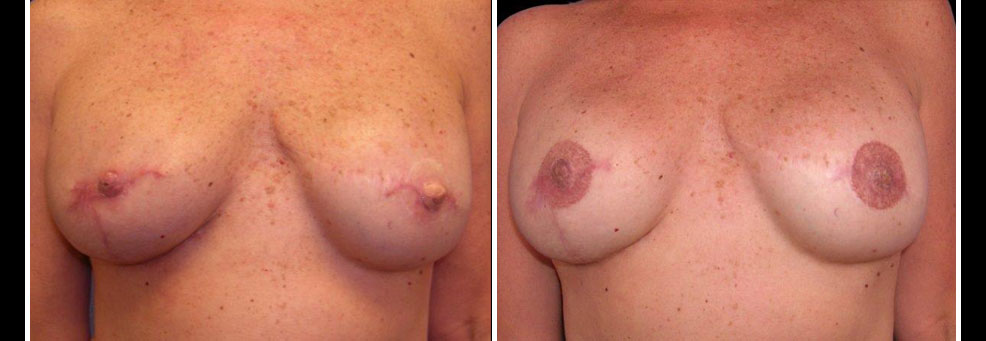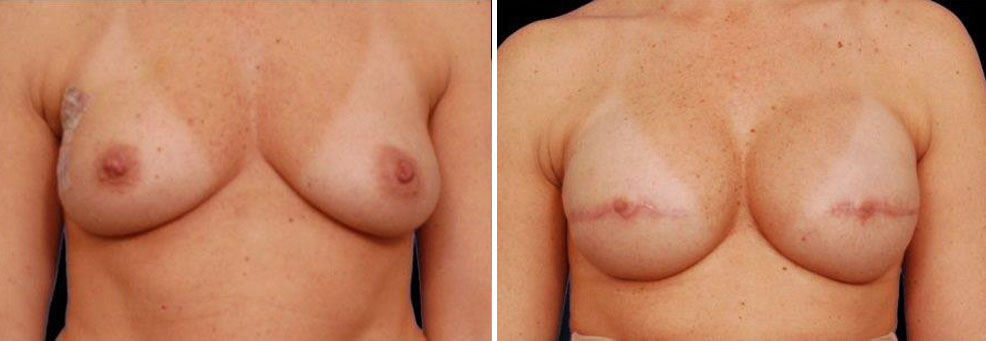Breast Reconstruction
In Annapolis, MDBreast Surgeries at Sullivan Surgery & Spa


Procedure & Results
Recent advancements breast reconstruction techniques provide women with more options following their mastectomy. Prior to surgery, Dr. Kelly Sullivan will discuss these techniques and prepare a plan to determine which option best fits your needs and desires. Skin expansion is the most common technique for breast reconstruction. It combines expanding the skin and inserting an implant. After the mastectomy, your surgeon will insert a balloon expander beneath the skin and chest muscle. Through a small valve mechanism buried under the skin, she will gradually (over several weeks or months) inject a salt-water solution to fill the expander. Once the skin is sufficiently stretched, the expander may be removed in a subsequent operation and replaced with a more permanent implant.
A flap reconstruction involves the creation of a skin, muscle and fat flap using tissue taken from another part of the body. Depending on the type of flap surgery, the tissue can remain attached to its blood supply, and with the accompanying skin, fat and muscle can be tunneled beneath the skin to the chest. Or a micro-vascular flap can be used with skin from the abdomen, buttocks or thighs and once transplanted, blood vessels are reconnected to the new ones in that region. This surgery can take from two to six hours, depending on the option chosen. Most breast reconstruction surgery involves more than one procedure, with the first surgery usually taking the most time.
Because safety is our first concern, Dr. Kelly Sullivan always works with board-certified anesthesiologists to ensure that your surgery is as safe as possible. You’ll never be rushed with Dr. Kelly Sullivan, and you will have adequate time for a thorough consultation so they can clearly understand your goals for surgery. Their helpful office staff will also help guide you through the process, ensuring you feel comfortable every step of the way.
Additional Procedures
Recovery & Aftercare
Insurance Facts
Support For Reconstructive Surgery Patients
Wellness House of Annapolis serves anyone impacted by cancer: cancer patients going through treatment and recovery, their spouses, their children, their caregivers and their friends. We also serve as a valuable resource for community members working or associating with cancer patients and their families, such as teachers, guidance counselors, doctors and clergy.
If you or someone you know could benefit from our services, please contact us:
Wellness House of Annapolis
2625 Mas Que Farm Rd.
Annapolis, MD 21403
Phone: 410-990-0941 Fax: 410-990-0943
Email: info@annapoliswellnesshouse.com
